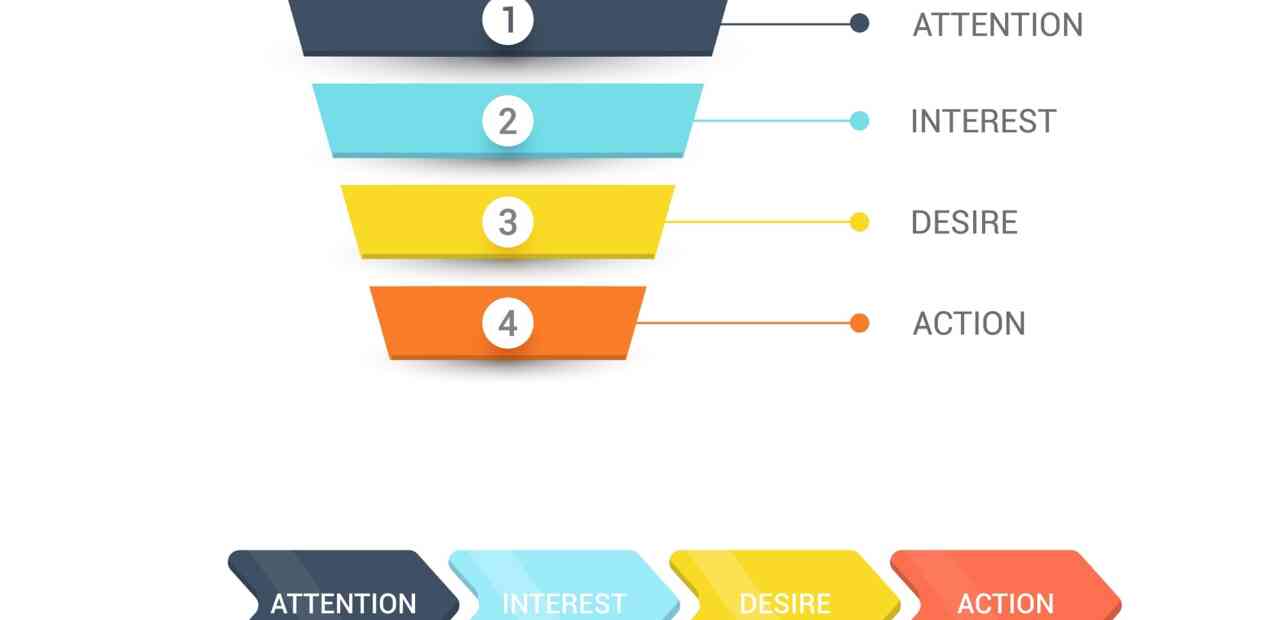Conversion optimization of the sales funnel is one of the most important components of success in online marketing. If your site is selling a product or offering a service to potential clients, you already have a conversion funnel, though it may not yet be optimized for the best possible web usability.
The Conversion Funnel
Think of the conversion funnel as a way to visualize your site’s traffic flow, allowing your company to understand the way potential clients convert into paying or long term customers. By understanding the process of conversion through this funnel, you’ll be able to take action, improving user experience and, in turn, optimizing the sales funnel.
A.I.D.A. Still Works for Conversion Optimization
If you haven’t heard of the acronym AIDA, your site may be missing out on conversions. Let’s break it down to better understand it.
- A is for attention or awareness. This is the first step, comprising the top of the funnel. For a consumer to make a purchase decision, there must be some level of awareness and visibility. This is usually related to content, communication, marketing, advertising, etc. Being at the top of the conversion funnel, everything else will trickle down from here, so this is important.
- I stands for interest. It’s not enough for potential consumers to know about your business; they need to be interested. This is what separates good companies from average companies. The average company is able to get attention, while the good company knows how to capitalize on that attention.
- D is for desire. Interest transitions into desire when the customer is swayed, influenced, or pushed in a particular direction. The product or service is no longer merely intriguing; it’s something they want. Generating desire means generating additional sales revenue.
- The last A stands for action. This is when desire comes to a head and the visitor converts from a potential client to an active one. At this point, the client follows through on the Call-To-Action, buys a product, or fills out a request form.
Optimizing the Conversion Funnel
It’s not enough to understand the conversion funnel; it’s critical to optimize the conversion paths for all areas of your website. Let’s break down the AIDA formula further.
The first part of getting user’s attention is being relevant to that user. Know your audience. What is their gender? What is the age demographic? What are their interests, location, etc. What are your user’s pain points? What problems are they looking to solve? How can you communicate the solution to capture their attention?
If you can’t retain visitors on your site, you have a major problem that will affect every other area of your business. Use your web analytics to assess average time on page, click through rates, and bounce rates to evaluate visitor attention and retention.
If using Google Universal Analytics, you can review Audience Demographics, Interests and Geo stats, but also be sure to drill down your conversion funnel analysis thru Behavior Flow, Site Content, Landing Pages, Goals, Reverse Goal Paths, Funnel Visualization and Goal Flow. The Google In-Page Analytics is not as good as using separate eye tracking heat map tools to reveal a deeper level of user behavior.
Desire means catering to what the user wants. Beyond interest, it’s about satisfying the need of why the user came to your website in the first place. SATISFY THEM by communicating what makes your product or service different from its competition. Be sure to take the time to create AND COMMUNICATE your Value Proposition that clearly defines why the user should do business with your company vs the competition. Show off your raw data and make your visitor understand why you’re the best.
Finally, directly guiding and encouraging the action – or conversion – means you’ve won your user’s trust and successfully moved this user through the funnel. You can measure action by creating tangible Call-To-Actions and conversion goals.
In Summary
The A.I.D.A. conversion formula for content creation is tried and true. When it comes to optimizing your site’s content for conversion, don’t stray away from what works. Grab your visitor’s attention, make them interested in your brand, show them why your service is better than the rest, and let the client take action.Be sure to review and study your web analytics to understand what is working and what you might need to test and tweak.


